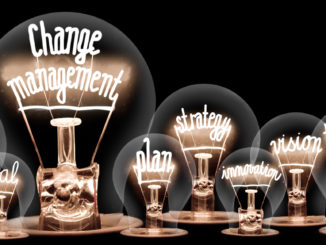Fortune 500 companies are moving to this design, and it’s time that gaming does as well
When I started on my first day in gaming analytics 10 years ago, I remember being very excited to see the “war room.” You know, the big room with screens on every wall where all these super smart people who never see the light of day are analyzing the floor in real time, monitoring everything going on, making adjustments as necessary, adjusting the games, identifying important players, catching cheaters … you know, the “war room”! Maybe I’d seen too many movies. After all, with all the money that the gaming industry makes, doesn’t every casino have a Greco like the one in Ocean’s Thirteen?
Well, no surprise to anyone in the gaming industry who might be reading this, but there was no “war room.” In fact, the best I got was analysts with Excel spreadsheets with some conditional formatting. I was shocked and disappointed. Instead of working in a war room, I got a computer with what seemed like 100 different icons on it, one for every system that the casino operated. One for the poker room, one for valet, one for hotel, one for the player database, one for the slot floor, one for accounting, one for table games, one for restaurants, one for the showroom, one for retail, one for … holy cow. If someone wanted to know something data-wise, I had to get it out of all these systems, and these systems don’t talk to each other very well, if at all. They’re made by different companies for different purposes and were never meant to tell a cohesive story.
In the analytics world, we’re always faced with the problem of finding the best ways to collect, connect, analyze and operationalize the data, and that’s no easy task with so many separate systems in gaming. If you’re lucky enough to have some software engineers working for you, you may be able to create a large data warehouse, but be warned that data warehouses are typically built using relational databases. For non-I.T. folks like myself, a relational database is data stored in countless, separate tables with columns and keys. Essentially Microsoft Access on steroids. Connecting this data together means that you still need to create JOINS on these tables when you query data. Unfortunately, most queries with any complexity would take hours to run or simply crash the system entirely. This is a big data problem, and we need a database architecture that’s designed to interconnect immense amounts of data in real time from disparate data sets.
Introducing graph databases. Thanks to the big data revolution and the complex, interconnected data analysis requirements of big data companies such as Facebook, Google, Amazon, Netflix and eBay, graph databases have emerged! Graph databases are essentially a relationship-based data warehouse, where instead of storing data as tables, key data is stored as a collection of nodes and edges, with the edges representing the relationships between the nodes. This is what a graph database compared to a relational database looks like:
The graph database allows data to be linked together directly as it’s being stored, maintaining the relationships between data as part of its design. So instead of trying to JOIN all this data in a relational database as you’re querying the data, graph databases store relationships within the database itself! Imagine, a database built to interconnect disparate data sets to create a cohesive story! No wonder so many Fortune 500 companies are moving to graphs, and it’s time that gaming does as well.
Graphs collect and connect data, but how about analyze and operationalize? Well, they do that too. Since graph databases are designed based on how the business operates, graph data is built for insight and analysis. By studying the relationships between guests and products, it’s now possible to do sophisticated player worth predictions, floor optimization, Player 360 profiles, improved operations, game management, security, optimized offerings and campaigns, whatever our feeble minds can think of … and in real time. Since we have all this data in one spot, it’s much easier to operationalize those insights into applications, maps, campaigns, real time monitoring, etc., even down to a smartphone!
This article is really just a teaser as to what’s coming. I suppose that I never gave up on my dream of seeing a war room, and with graph database technology available today, I believe we have found the engine to power it.






